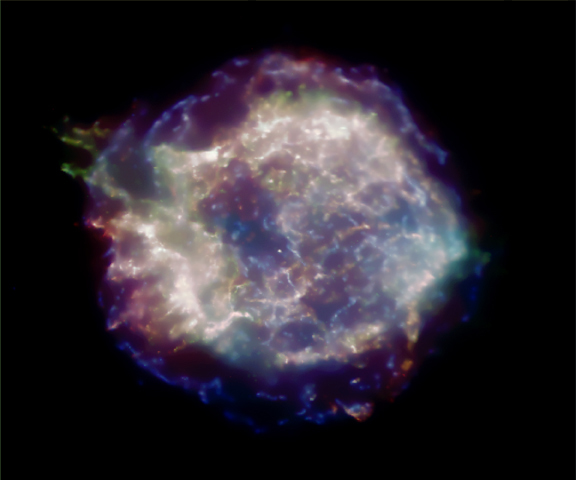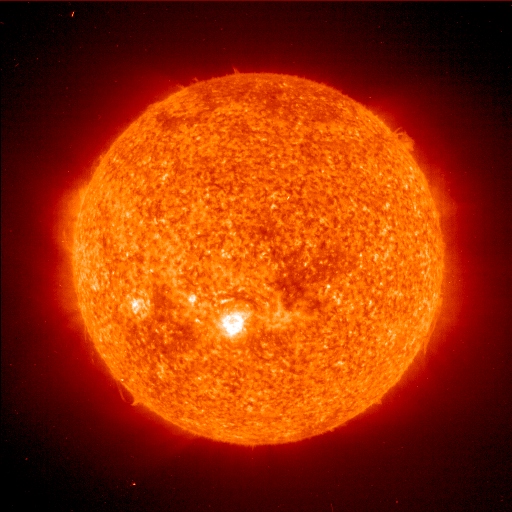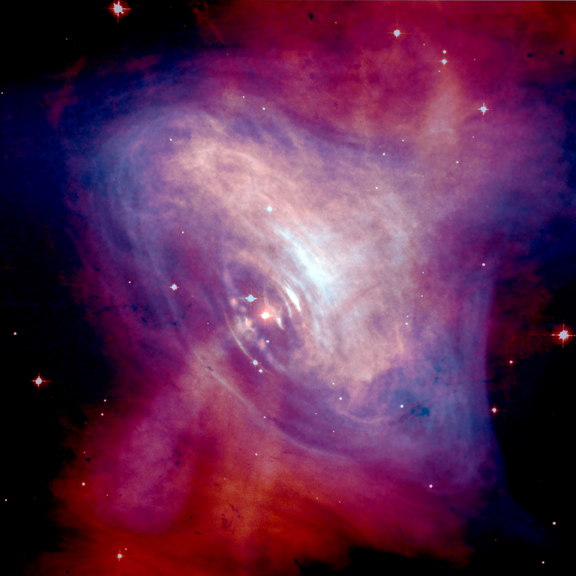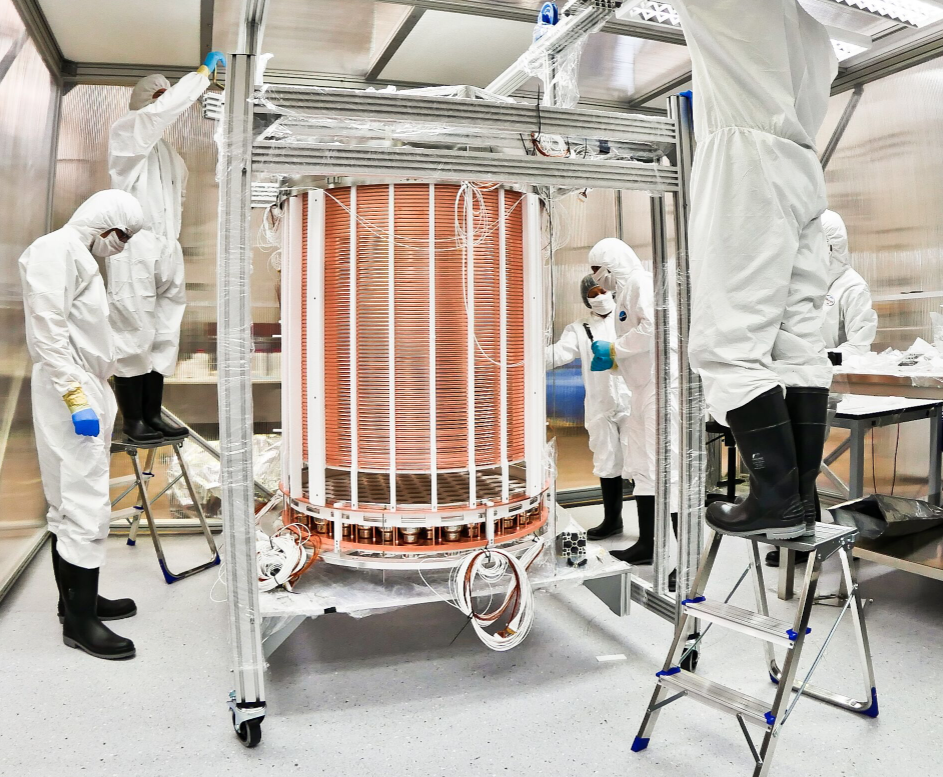

ASTR 400/500: UNDERGRADUATE/GRADUATE SEMINAR
TITLES AND ABSTRACTS (FALL 2023)
Aug 30: Charlie Gardner
Title: Modeling the Cavity of LkCa15
Abstract:
In the past decade, the Atacama Large Milimeter/submilimeter array (ALMA) has
revealed a plethora of substructures in the disks surrounding young stars. These
substructures have a number of proposed formation mechanisms, with one leading
theory being the interaction between the disk and a newly formed planet. Using
the hydrodynamic code LA-COMPASS and high angular resolution ALMA data, we
attempt to recreate the observed substructure in the protoplanetary disk of
LkCa15 with planets. This source is particularly interesting to model as it
possesses a large cavity in dust continuum observations, yet still shows gas
within the cavity when observing molecular lines like 12CO.
Aug 30: Shih-Yun Tang
Title: Tracing Spot Variability in T Tauri Stars:
A Search for the Youngest Hot Jupiters
Abstract:
Studying planets still forming is a most effective path to gain deeper insights
into planet formation. This is particularly so when focusing on systems hosting
"hot Jupiters" because of their large size and short orbital periods.
Understanding the formation history of these hot Jupiters is crucial for our
knowledge of habitable world development. Yet, finding hot Jupiters around young
stars using the radial velocity (RV) method is challenging for their strong
stellar activity, including large cool spots that can mimic RV signals from
planets. Gaussian Process Regression (GPR) helps isolate RV signals from stellar
activity, but it requires prior knowledge of factors like the stellar rotation
period and spot characteristics. Here, I will present my
ongoing work of using the OH/Fe equivalent width ratio to trace spot
variability, focusing on a simulation model to reproduce these variations.
Sep 6: Dr. Chris Johns-Krull
Title: Accretion onto Giant Proto-Planets
Abstract:
Giant planets go through a stage of rapid gas accretion from circumstellar
disks. Over the past few years, several investigators have observed such giant
planet accretion, though turning the observations into measures of the accretion
rate is proving challenging. This talk will be a review of several recent papers
discussing the theory and observations of giant planet accretion. A key focus
will be the recently published paper "The Giant Accreting
Protoplanet Survey (GAPlanetS) — Results from a 6 yr Campaign to Image Accreting
Protoplanets" by Follette et al. (2023).
Sep 13: Dr. Matthew Baring
Title: The Dynamic Character of Magnetars
Abstract:
Magnetars are the most magnetic stars in the Universe, known for their prolific
flaring activity in bursts of hard X-rays that emanate from their
magnetospheres. Yet the persistent soft X-ray signals from their surfaces
occasionally provide fascinating variations that deliver insights into the
dynamic character of magnetars. This talk summarizes two recent papers that
highlight the discovery of a new type of magnetar behavior. The two describe
the migration and merging of three peaks with rotational phase in the pulse
profile for the magnetar SGR 1830-0645 in NICER observations taken in the first
couple of months after the star's discovery. The appearance of multiple pulse
peaks indicates at least three surface hotspots. These bright emission locales
are likely tied to footpoints of magnetic field lines that thread the
magnetosphere, thereby suggesting a multipolar field morphology. The phase
evolution of the peaks is naturally interpreted as evidence for magnetic field
line migration across the stellar surface, perhaps combined with plastic motion
of the crust that is driven by powerful magnetic stresses. Such spatial motion
of field lines is reminiscent of activity in the solar corona.
Sep 20: Ray Hagimoto
Title: Measures of non-Gaussianity in Axion-String-Induced CMB Birefringence
Abstract:
The presence of axion strings in the Universe after recombination can leave an
imprint on the polarization pattern of the cosmic microwave background radiation
through the phenomenon of axion-string-induced birefringence via the hyper-light
axion-like particle's coupling to electromagnetism. Across the sky, the
polarization rotation angle is expected to display a patchwork of uniform
regions with sharp boundaries that arise as the `shadow' of axion string loops.
The statistics of such a birefringence sky map are therefore necessarily
non-Gaussian. In this talk we quantify the non-Gaussianity in
axion-string-induced birefringence using two techniques, kurtosis and
bispectrum, which correspond to 4- and 3-point correlation functions. If
anisotropic birefringence were detected in the future, a measurement of its
non-Gaussian properties would facilitate a discrimination across different new
physics sources generally; in the context of axion strings, it
would help to break degeneracies between the axion-photon coupling and
properties of the string network.
Sep 27: Dr. Justin Spilker
Title:
Cleaning up the Dusty Universe with JWST and ALMA
Abstract:
About half the light ever emitted by stars over the history of the universe has
been absorbed by interstellar dust and re-radiated at long wavelengths.
Dust-rich galaxies, extremely faint in visible light images, are the sites of
intense starbursts that can rapidly assemble and then cut short the growth of
the earliest generations of massive galaxies. I will discuss the ways that two
synergistic telescopes - the submillimeter telescope ALMA and the
infrared-optimized James Webb Space Telescope - are changing our view of these
distant dust-enshrouded galaxies. The talk will present ongoing work to
understand how distant massive galaxies feed into their surrounding cosmic
ecosystems. Some early results from the JWST Early Release Science program
TEMPLATES will be highlighted; these provide a qualitatively new view
of the high-redshift universe.
Oct 4: Sam Millstone
Title: Using Analysis of Synthetic Observations to Investigate
the Star-Gas Correlation in STARFORGE
Abstract:
This talk explores the relationship between stellar and gas surface
densities (the star-gas or S-G correlation) in a 20,000 M⊙ simulation
from the STAR FORmation in Gaseous Environments (STARFORGE) Project.
Synthetic observations based on the Spitzer and Herschel telescopes are
created by modeling active galactic nuclei contamination, smoothing
based on angular resolution, cropping the field-of-view, and removing
close neighbors and low-mass sources. Star-gas properties such as the
dense gas mass fraction, the Class II:I ratio, and the S-G correlation
(ΣYSO/Σgas) are extracted from the simulation and compared to
observations of giant molecular clouds, young clusters, and star-forming
regions, as well as to analytical models. The simulation reproduces
trends in the counts of young stellar objects and the median slope of
the S-G correlation. This implies that the S-G correlation is real, and
not simply the result of observational biases. However, other
statistics, such as the Class II:I ratio and dense gas mass fraction, do
not always match observed equivalents in nearby clouds. This motivates
further observations covering the full simulation age range and more
realistic modeling of cloud formation.
Oct 11: Siyang Ling
Title: Cosmological Gravitational Production of Massive Spin-2 Particles
Abstract:
The phenomenon of cosmological gravitational particle production (CGPP)
is expected to occur during the period of inflation and the transition
into a hot big bang cosmology. Particles may be produced even if they
only couple directly to gravity, and so CGPP provides a natural
explanation for the origin of dark matter. In this work we study the
gravitational production of massive spin-2 particles assuming two
different couplings to matter. We evaluate the full system of mode
equations, including the helicity-0 modes, and by solving them
numerically we calculate the spectrum and abundance of massive spin-2
particles that result from inflation on a hilltop potential. We conclude
that CGPP might provide a viable mechanism for the generation of massive
spin-2 particle dark matter during inflation, and identify the
favorable region of parameter space in terms of the spin-2 particle's
mass and the reheating temperature. As a secondary product of our work,
we identify the conditions under which such theories admit ghost or
gradient instabilities, and thereby deriving a generalization of the
Higuchi bound to Friedmann-Robertson-Walker spacetimes.
Oct 18: Daniela Hikari Yano
Title: Exploring aLIGO Sensitivity Across Binary Black Hole Parameter Space
Abstract:
Understanding the sensitivity of the network of aLIGO, Virgo and KAGRA
(LVK)’s gravitational wave detectors for compact binary coalescences
(CBCs) is important for estimating the merger rate density. The model
space of CBCs is composed of fifteen parameters, which are used to
characterize the binary systems. In this work, we develop a
computational efficient pipeline to study how the network sensitivity
(i.e., space-time sensitive hypervolume, SSHV) changes according to
changes in the CBC population parameter space. Using Monte Carlo
simulations, the pipeline can solve the averaged SSHV for different
parameter configurations, marginalizing over subsets of the parameter
space, allowing for comparisons between different models.
Oct 18: Richard Xiao
Title: IXPE X-ray Polarization in Blazars
Abstract:
A recent addition to NASA's mission fleet is the Imaging X-ray
Polarimetry Explorer (IXPE). This talk summarizes three recent IXPE
publications regarding the detection of X-ray polarization in blazars,
powerful emitters of radiation ranging from radio to optical to X-ray to
gamma-ray wavebands. In addition to detecting X-ray polarization in
blazars for the first time, with degrees of polarization in the 10-20
percent range, IXPE has also observed large rotations of the X-ray
polarization angle over periods of a few days. When compared to the
polarization measurements of optical wavelengths in the same timeframe,
these X-ray synchrotron measurements help progress our understanding of
the nature of relativistic jets in blazars.
Oct 25: Toni Panzera
Title: Accretion Properties of a Young Brown Dwarf
Abstract:
Young stars which have just emerged from their natal nebulae go through
a very active T Tauri phase, where accretion of material from the
circumstellar disc onto the star plays an important role in both the
star’s evolution and its ability to host planets. The accretion
properties of low-mass stars have been relatively well-studied, and
recently accretion onto planetary mass objects has been proposed. Brown
dwarfs are the link between low-mass stars and planets. In this talk, I
present HST observations of a young 52Mjup brown dwarf, J0844, that
exhibits signs of accretion. One of the major signatures of accretion in
T Tauri stars is the presence of hot FUV emission lines, such as C IV.
However, C IV emission can also be produced through magnetic activity.
J0844 indeed shows C IV emission, but it is much lower than what would
be expected of an accreting T Tauri star. I compare both the accretion
rate and C IV emission of J0844 to several accreting T Tauri stars, and
speculate as to what causes the observed differences and whether
accretion or magnetic activity is the dominant process.
Oct 25: Anthony Atkinson
Title: Getting the Most of High-Contrast Direct-Imaging Data with the dgvAPP360
Abstract:
Two decades ago, the first direct detection of an extra-solar planet was
made by a team at the VLT. Since then, the detector technologies and
data reduction methods have grown increasingly more sophisticated. Yet,
they still face significant barriers in studying a wider range of
interesting targets, as direct imaging methods typically favor planets
that are large, bright, at wide separations, and whose orbits are
face-on to the detector. A recent development in coronagraph technology,
the dgvAPP360 (double-grating 360deg vector Apodizing Phase Plate), has
improved on its predecessors in the contrast limits it can achieve.
It takes a combination of both efficient technology
and efficient data processing to achieve the deepest contrasts and thus
obtain the best signals. Results from this new instrument have been
processed by a suite of reduction methods to find the optimal data
processing pipeline. This talk summarizes the variability study of
Sutlieff et al. 2023, which examines high-contrast direct-imaging data
of a sub-stellar companion using the dgvAPP360. It also addresses a
follow-up study of the performance of different post-processing
techniques that uses these same dgvAPP360 data.
Nov 1: Nick Proietti
Title: Stellar Kinematics of Low-Mass Stars in Trumpler 14 and Trumpler 16
Abstract:
Most stars and planets form in clusters/associations with hundreds of
low-mass stars and their associated planetary systems forming alongside
high-mass stars. Ionizing radiation from high-mass stars inundates and
destroys protoplanetary disks around nearby low-mass stars, reducing the
timescale for planet formation. However, given that stars may traverse
considerable distances across diverse settings during their
formation, spatial information alone falls short of accurately
portraying how the dynamical state of the cluster and the incoming
feedback changes over time. To comprehend the temporal evolution of a
cluster's morphology and elucidate the changing separations between
planet-hosting low-mass and high-mass stars, the variations in incident
radiation onto the disks, and most importantly, the progression of
photo-evaporative disk destruction, it is crucial to first establish
constraints on the kinematics of low-mass stars in high-mass clusters.
In this talk, I present my ongoing work of measuring the velocity
dispersion of the Trumpler 14 and Trumpler 16 clusters in the Carina
Nebula, one of the nearest high-mass star-forming regions, and the
motivation of obtaining a radial velocity dataset of these stars to
understand protoplanetary disk survival in star-forming conditions.
Nov 15: Dr. Elena Pinetti
Title: Probing Dark Matter with Cosmic Voids
Abstract:
In this talk, I will explain why cosmic voids are an interesting new
target for dark matter searches. I will show that the expected
signal-to-noise ratio resulting from decaying dark matter is
significantly more favourable in cosmic voids as compared to dark matter
halos, as a result of the reduced astrophysical background. This opens
an exciting new avenue for dark matter searches.
Nov 29: Dr. Tom Giblin
Title: The Universe Needs Gravity
Abstract:
We have no direct evidence that general relativity is wrong; every
precision test is a resounding confirmation of this elegant and powerful
mathematical model. Yet the greatest cosmological problems of
our time likely require us to abandon general relativity. About 95% of
the Universe remains a mystery whose solution evades our abilities. I
will talk about how there may still be places in general relativity that
have, until now, gone unexplored. Numerical simulations are a powerful
tool that can model the complex non-linear issues of general relativity
on cosmological scales. I will present progress that we have made toward
modeling the Universe in its full splendor and outline where there’s
hope that we can start to tackle these great questions.







